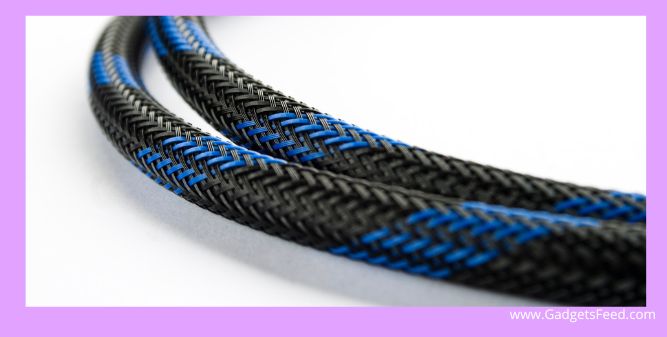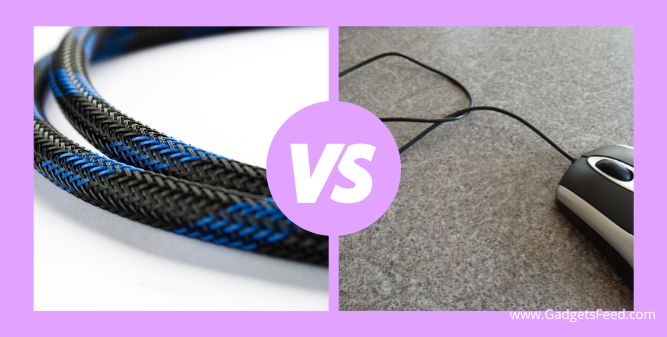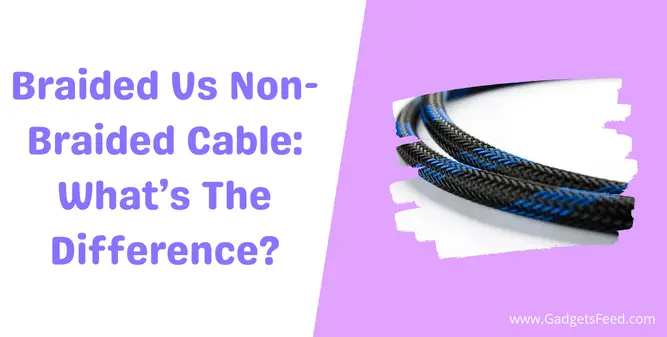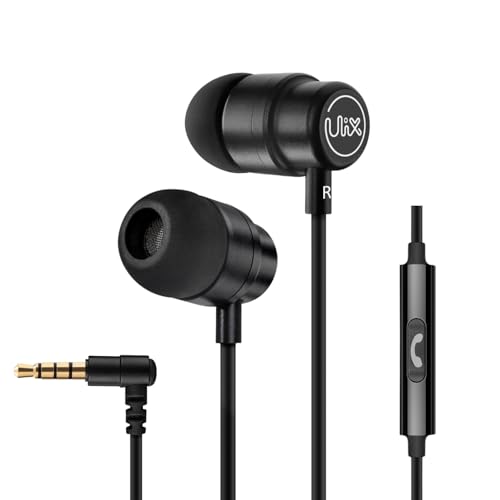Whether you’re an engineer, a gamer, or just someone who wants the best possible audio from their gaming system, there is a good chance that you’ve come across the question of whether to buy braided vs non braided cables.
If you’re unsure what these terms mean, this article will help you understand the differences between braided and non braided cables and which type might be better for your needs.
What is Braided Cable?

Braided cables are designed with a braided sheath, which is made of multiple strands of protective material that have been woven together.
Each strand has multiple wires inside that are individually insulated. The braiding increases the strength of the cables and can protect them from getting damaged or frayed over time.
Nylon braiding creates additional, stronger wires or cables by weaving strands of nylon together. The structural stability of nylon is more enhanced when utilized in this process compared to other alternatives.
What is Non-Braided Cable?

Non-braided cables have a smooth, pliable feel without weaving or braiding, giving them a harder surface around the wires.
Non-braided cables can also be thinner and lighter than braided cables, making them great for transporting between gaming devices.
However, these non-braid benefits also come at a cost: less durability may mean your cables are more likely to fray or crack over time.
Are Braided Cables Better?
In my opinion, the braided cable looks and feels more attractive than the non-braided cable. It looks more durable, and I like the feel of the braided cable in my hand.
On the other hand, the non braided cable looks much less durable and appears to be much thinner and lighter. Because of this, I prefer the braided cable.
The braided cable lasts a long time and can take a few knocks along the way, so it’s the better choice for me. Even though the cables are flexible, they are still thicker and harder than regular cables.
You may like;
How Many Watts Does a Laptop Use?
How To Access Laptop Camera Remotely
Are Braided Cables Waterproof?
People use braided wires for their strength and durability, as well as their waterproofness and electrical qualities. These cables come in a variety of colors and sizes. There are a variety of sizes and colors to choose from.
The three-layer structure consists of a central copper wire running through the middle of the cable, an insulating material separating it, and a metal sheathing encasing it to protect it from outside influences.
Unlike braided cables, non-braided cables do not have the same structure, as they only have one protective layer around them, making them less durable than braided cables of the same type.
It does not mean that non-braided cables are automatically inferior to braided counterparts. There are still other aspects to consider.
Braided vs Non Braided HDMI Cable

Braided HDMI cables are the most commonly used cables. They provide better durability and versatility than non-braided alternatives and can be easier to thread through tight spaces between equipment.
The downside of using braided cables is that they feel stiffer when manipulating electronics, which can impede your ability to connect cords between different devices as easily.
Non-braided cables are more flexible and less expensive than their braided counterparts. Many consumers choose non-braids for their cheaper price and individual flexibility of each wire, leading to a smoother connection to electronics with fewer kinks in any wires and the ability to run cables anywhere at any time you want.
Braided HDMI cables may be a bit more expensive than their non-braided counterparts, but they can add a touch of style to any home theatre setup. The braided version might also be worth considering if you want to stand out from the crowd.
Their appearance is the same to the naked eye, except for one thing: one is smoother and feels better in your hand. Is it worth putting aside some extra cash for a braided HDMI cable? If you want to stand out from the crowd, then a braided cable could be for you.
They are often woven into an attractive design that adds flair to your home theatre or gaming setup. These cables come in various colours, including black and white with colorful accents, and some contain metallic blades.
It may be worth it if you don’t mind paying a bit extra for a cable that will last for years. However, proper care and attention are crucial if you want a cable that will last for years.
Vendors may offer both non-braided and braided cables. It is important that the cables you purchase are high quality, durable, and will provide a smooth connection, so be sure to check for high-quality cables on all of your devices if you see both types available in stores.
You May Like:
4 Easy Ways to Track A Stolen Laptop
Average Laptop Lifespan by Brand
How Long do Gaming Laptop Last
Benefits of Braided Cable
Style and Ease of Use:
Much like a jacket on a distinguished gentleman, the braided cable takes a simple component and makes it look more elegant.
A braided cable can be black or white with different accent colours attached to it, solid colours, lined patterns, blended patterns, or what have you.
The small 5mm diameter 8 core copper braid adds physical protection for your HDMI connection and helps the wire remain wearable for longer periods of time without becoming damaged.
The smooth inner surface of the braid provides durability against abrasion from play activity and normal handling over time.
Electrical Surge Protection:
The braid around the electrical conductivity of your wire provides an extra layer of protection for the internal wires.
If a surge or spike does happen to make it through your home’s electrical protection and reaches your cable, the braid will absorb a lot of damage and reduce it to the point where there will be little to no noticeable damage done to your connection.
This can be a valuable feature for those who travel frequently or find themselves in areas prone to power surges.
Cost:
While a braided HDMI cable probably won’t come cheap, the price seems reasonable if you consider that other products that offer similar features cost more than $100! With many people owning multiple devices which use HDMI cables at any given time, having these cables can save you money on replacing damaged or lost wires when accidents occur.
Good looks:
Indeed, sometimes style matters more than practicality in some cases. A braided cable is just plain cool! Most people enjoy choosing their cable colors and designs based on preferences.
With so many modern homes using them as decorations next to flat-screen TVs during parties, they provide an instant way for decorators and entertainers alike to increase their visual appeal (as long as they match).
This can also represent added value when selling properties; enhanced functionality and appearance are almost always preferred over excessive design flaws! Not only do they look good on electronics, but they also make great additions to any entertainment room.
Disadvantages of Braided Cable
Cables are made of materials that are designed to be durable and strong. As such, they will stand up to the rigors of everyday life; however, sometimes, their strength is too much for their good.
One example of this is with braided cables. Since the wires have been twisted together so tightly, they are too rigid to bend in any direction without kinking or breaking.
This means that if you need to route them around a corner, place them behind furniture, or replace sections of what’s already there, you need to take more time and effort than before. Others consider the increased thickness of some braided cables a disadvantage, too; however, it’s important not to forget that the quality of the finished product is also important!
Braided vs Non Braided Cable Mouse
There is little difference between basic mice. Performance is about the same, and both are fairly durable. Optical technology, however, is where the real difference lies.
When braided cable became a must-have feature, the real difference between basic mice became obvious.
If you have a braided cable, the outer layer of damage can be contained to just the cable. If you have a non-braided cable, damage can spread through the entire length of the cable, which can prevent it from connecting properly or stop working altogether.
Aside from resisting kinks and twists better, braided cables also last longer than their non-braided counterparts.
Last update on 2025-11-13 / Affiliate links / Images from Amazon Product Advertising API
Are Braided Cables Better for Headphones?
Compared to non-braided cables, braided cables are much more durable and hard to fray after use. They are also less likely to tangle.
Braided cables are an excellent choice when you listen to music or watch television shows.They do not get tangled as easily as non-braided cables and are therefore easier to use.
Braided cables are slightly more durable, making them an excellent choice for headphones. You will be able to use these cables for a long time before you purchase new headphones.
Last update on 2025-11-13 / Affiliate links / Images from Amazon Product Advertising API
FAQ( Braided vs Non Braided Cable)
Why are braided cables so popular?
Since braided wires do not stick together or adjacent braided wires, this makes them more sturdy than standard cables, preventing them from tumbling around as rubber cables do, minimizing the chance of being snagged. For instance, most USB cables, when kept in decent care, have a longer life span.
What is the best way to untangle braided cables?
Either the braid has become disordered, or the cable has been distorted. To repair the braid, I first squeeze it at the cursor with my index and forefinger, then pull it towards the USB terminal, twirling the braid through my knuckles. However, do not let the braid come undone around the edges where another cable is trying to protrude.
Conclusion
After reading this article, you should now be familiar with the differences between braided and non-braided cables. This article will help you determine which type of cable is right for you.
Now that you know about the types of cables and how they differ, you can decide which type is right for you. The two most common cords you will find in stores are non-braided and braided. Both types have their advantages and are not necessarily better than each other.
If you want a cable that will last a long time, then you should buy a braided one. If you want a cable that is easy to handle, then you should opt for a non-braided cable. In all cases, it is important to buy high-quality cords and pay attention to the type of plastic used to make them, as not all cables are created equal regarding durability and quality.

Hi, I’m Michael Davis, the owner and writer of GadgetsFeed.com. This website is where I share my knowledge and passion for tech, laptops, and computers. I’m a software engineer by profession, and I enjoy testing and reviewing various gadgets and technologies. I started GadgetsFeed.com to help others find easy solutions for their laptop, computer, and tech problems.


![Redragon M602 Gaming Mouse, Ergonomic RGB Gaming Mouse Wired with 7200 Adjustable DPI, 9 Programmable Buttons, Professional Software for Gamer Office [Black]](https://m.media-amazon.com/images/I/4189L2UBl9L.jpg)


